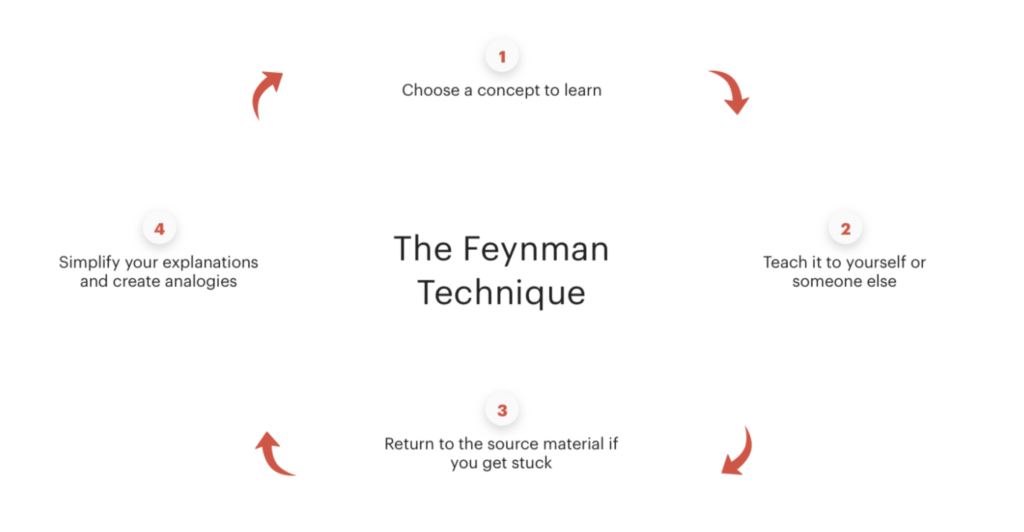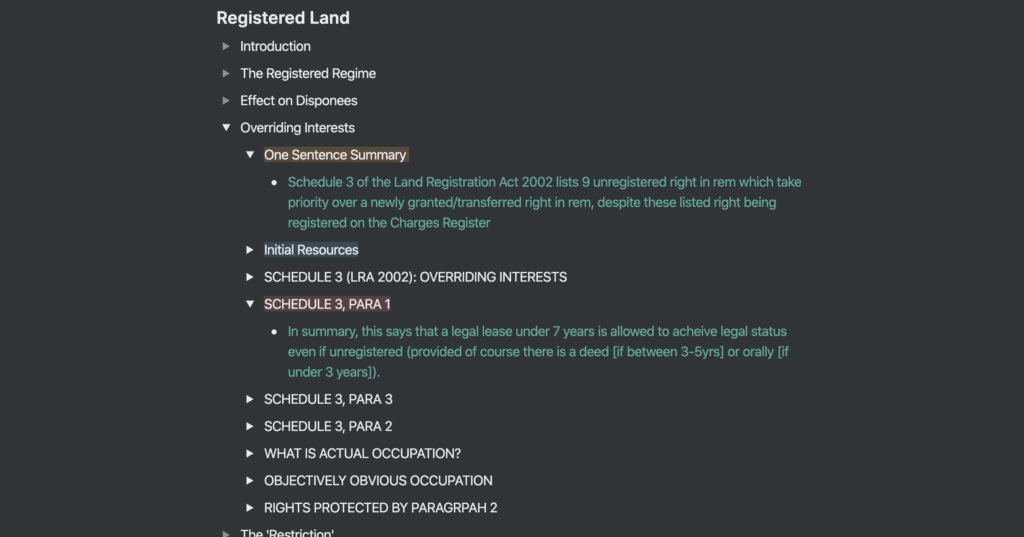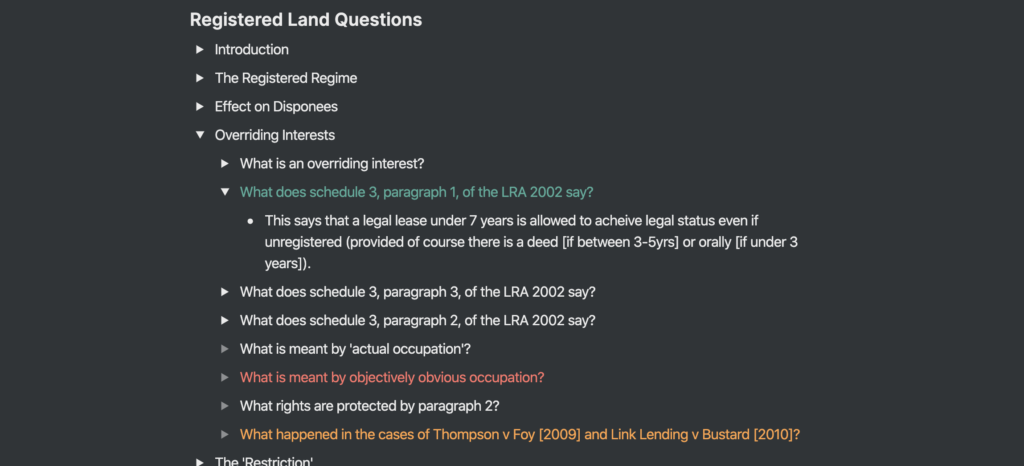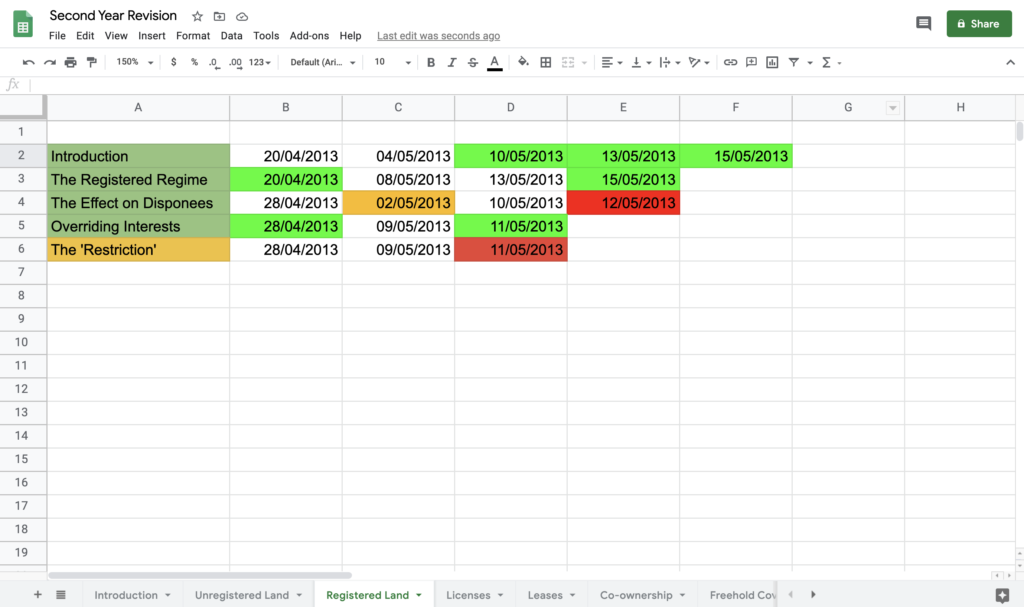Table of Contents
Approximately 10% of law students will complete their studies as the proud owner of a first-class degree, which makes it statistically the hardest degree to get top grades in. Having read that you’d probably think it would take some sort of minor miracle to rank first at law school, and you would be right if you listened to all the generic advice offered by professors and peers. Their advice is often repetitive, mostly subjective, and has no real evidential basis as to whether it actually it works or how you can apply to studying law. So, in this article I will be breaking down the Efficient Study Framework I used when revising for my exams, supported with evidence, which ultimately helped me to rank first at law school.
Firstly, I’ll introduce you to the Feynman technique and how you should use this to initially condense your legal knowledge. After condensing your knowledge you need a solid structure to learning that knowledge, using something knosn as active recall. Finally, I will go into detail about how interleaving increases the efficiency of knowledge acquisition and show your my personal interleaving study sheed that helped me to consistently improve my understanding of the weakest areas of the law.
🧪 The Feynman Technique
The Feynman Technique is a learning model developed by renowned physicist Richard Feynman that essentially involves breaking down your legal studies into its simplest components. You can think of it as creating such a comfortable understanding of a topic that you are able to communicate that knowledge coherently to a lay person.
You’ve probably heard the Albert Einstein quote before, which went “if you can’t explain it simply, you don’t know it well enough”.
Put another way, ensuring you can explain difficult legal concepts in simple terms demonstrates that you have a good grasp of the content. It also allows you to quickly identify the areas where you are weakest, because this is where you get stuck when trying to explaining them.
So let’s say you wanted to learn about overriding interests in registered land, the process would be as follows:
- The first step is to identify the concept to learn and write it at the top of the page. Here, we want to learn about overriding interests, so that is what we would put at the top of the page
- The second step is to write out (or teach someone) everything you know about that topic, as if you were taking a lesson. For example, I may remember that paragraphs 1 to 3 of schedule 3 of the Land Registration Act 2002 is important, so I will write this down and any other information I can remember. You can take as long as you need when doing this.
- The third step involves returning to your lecture notes and textbooks if you get stuck while doing this and fill in any gaps in your knowledge
- Finally, take your complete set of notes on the topic and try to simplify this process further by removing unnecessary information and clarifying any confusions. It was this very process that eventually led me to create Digestible Notes!
- You then repeat this step each time you revise that topic, until you have a succinct and clear understanding of the law in that area

Progressive Summaries
When I was at university, I found it useful to take this concept one step further using a process known as progressive summarising. In short I wouldn’t just look to break down my law notes into one short summary, but create layers of summaries

As you can see here on Notion, a workspace I particularly enjoy to store all my learning resources, I have written some notes on land law. In this example, we see a snapshot of my notes on overriding interests, and you can see how I have used different layers of notes to condense the topic. I have my first level notes (‘Initial Resources’), which include all the information I initially felt was relevant. Then at a second layer, I condensed each of the sections into summaries, so I have summaries for each of the paragraphs in schedule 3 of the LRA 2002. And finally I have a toggle at the top (‘One Sentence Summary’) that includes a summary of the entire topic in an extremely condensed manner that gives me a holistic snapshot of overriding interests.
So now when I use the Feynmann technique and try to explain different legal topics, I already have a well structured review system that enables me to dive into each topic at different levels of depth, depending on how well or poorly I remembered it!
Although the Feynmann technique is great for initially condensing your understanding of legal topics, you still need a process of structuring your learning, which is where active recall comes in!
👀 Active Recall
The active recall method works as follows: basically, instead of learning everything in lectures and textbooks by writing notes, just write loads of questions for yourself and use this as the basis of revision. It’s been confirmed in loads of different studies but, in short, it forces you to retrieve memories with intent (i.e. recall information), rather than passively reviewing what you have been taught. After all, learning isn’t about how well we put information into our brains, it’s about how well we get information out of our brains.
When I was at university, the general advice for exam success was to “work hard and take regular breaks”, but this advice is incredibly generic and doesn’t specify how you should be working. The active recall strategy, in contrast, entails focused study on stuff you actually need to learn. This revolutionised the way I learnt in my second year of university, ensuring I was consistently improving my weakest aspects. Check out how I did this, for example:

Having gone through my notes, I would write down questions on everything. So for each topic you ensure you have an awesome bank of loads of questions that you can refer to everytime you sit down and study. Here you can see all the questions I have on overriding interests in land law, and you would go through each trying to answer them as best you can. If you don’t know the answer to one of your questions, make sure you give it a different colour (e.g red) and go back and refer to your notes to find the correct answer (or click on the toggle in Notion, as I’ve done here). Then next time you go over the questions again make sure you pay particular attention to the questions in red, as this was your area of weakness last time. Doing this automatically ensures you are implementing a system of spaced repetition into your legal studies, which I talked about in my previous article on How I Memorised Everything in Law School, and builds a solid foundation for memorisation.
Active recall was imperative in ensuring I didn’t relearn what I already knew and made each revision session more effective in driving me towards my learning goals. However, I knew that I couldn’t think about each law topic in isolation if I wanted to communicate my knowledge effectively in exams, which leads us to interleaved practice.
⛓️ Interleaved Practice
Interleaving is when you alternate your studying between two or more related concepts.
For example, in one study, participants were asked to study paintings of various artists. One group saw paintings grouped together in blocks by each individual artist, so they would look at all the paintings from Cezanne, then Picasso, then Monet, etc. Whereas the other groups would study the paintings interleaved, meaning that all the paintings were given to them in a mixed order. When it came to testing them on the paintings, the interleaved group far outperformed the blocked group as they were more easily able to identify patterns between the artists instead of thinking about them in isolation.
I used this idea in my third year of study to develop an interleaved study sheet to not only help me more readily see the links between topics within each module, but also between the modules themselves. After all, the law doesn’t operate in isolation and drawing links between cases and legal opinions from one area to the next is vital for critically thinking like a first class student.

The approach is to use Google Sheets and you make a Sheet for each module. Then in the first column of each sheet you write down all the topics you need to study, as you can see here for registered land, which enables me to accurately ‘scope’ the subject and visualise what I have to learn. Then every time you actively recall the subject using the aforementioned method, you simply write the date in the next column along. Over time, you will have a number of dates that signify the ‘repetitions’ of reviewing that topic, helping you to keep track of when you studied the topic. Crucially, by colour coding the project – for example red to indicate poor comprehension and green to indicate good comprehension – you can quickly jump from one topic or one module to the next with a particular focus on the trickiest areas for you.
It’s honestly such a simple system and helps create an unbelievably efficient workflow into your law studies. In hindsight it truly pains me for how long I put up listening to the generic studying advice offered by teachers throughout school, so I really hope you put some of this stuff into practice straight away! I have literally given you my exact blueprint to ranking first at law school, and implementing this will make your life so much easier, I promise!
🎉 Conclusion
The crucial point to remember is that ranking first in law is not about who can work harder or take fewer breaks, but about having an efficient learning process that you can rely on. For me, what worked was using the Feynmann technique to condense complex legal topics, using active recall to structure my knowledge acquisition, and then interleaved learning to use my time most efficiently. You can create your own processes as different things work for different people, but don’t just blindly accept you need to lock yourself in the library for months on end to achieve top grades!
If you enjoyed this article, make sure you check out the article on how I remembered everything at law school. This article explains in depth how I utilised spaced repetition to deeply engrain legal cases, giving me an abundance of brilliant legal evidence at my fingertips when writing exams and essays 🙂

